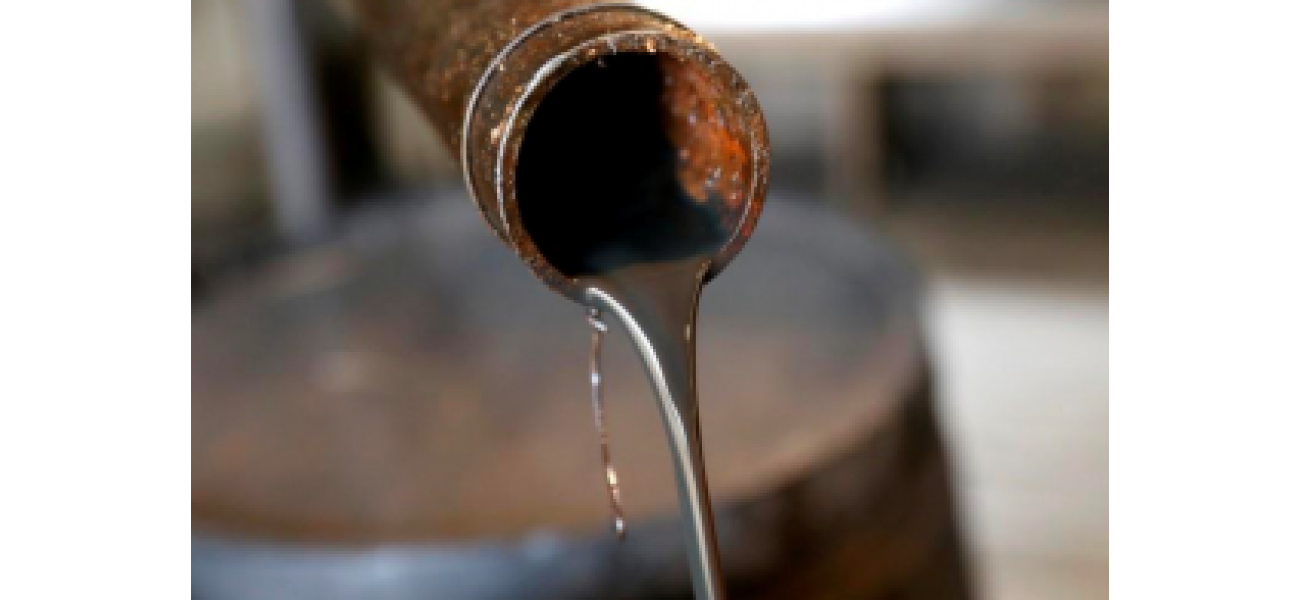India has bought 49 billion euro of Russian oil in third year of Ukraine invasion.
India, third largest oil importer, bought 49B euros worth of crude oil from Russia despite ongoing Ukraine conflict. Shift from traditional Middle East sources.
February 25th 2025.

According to a report by a global think tank, India, one of the world's top oil-consuming and importing countries, purchased 49 billion euros worth of crude oil from Russia in the third year of Moscow's ongoing conflict with Ukraine.
Traditionally, India has relied on oil from the Middle East, but following the invasion of Ukraine in February 2022, the country turned to Russia for its supply. Due to Western sanctions and reluctance from European countries to purchase Russian oil, it was available at a significant discount compared to other international benchmarks. As a result, India's imports of Russian oil rose from less than 1% to a whopping 40% in a short period of time.
The Centre for Research on Energy and Clean Air's latest report states that in the third year of the invasion, China, India, and Turkey were responsible for 74% of Russia's total revenues from fossil fuels. India's imports alone saw an 8% year-on-year increase.
Russia's total global earnings from fossil fuels reached 242 billion euros in the third year of the invasion, and have now totaled to 847 billion euros since the conflict began. Some of India's refineries used Russian crude oil to produce fuels like petrol and diesel, which were then exported to Europe and other G7 countries.
The CREA report reveals that in the third year of the invasion, G7+ countries imported 18 billion euros worth of oil products from six refineries in India and Turkey that process Russian crude. It is estimated that 9 billion euros of these exports were refined from Russian crude.
As refineries in India and Turkey increased their consumption of Russian crude, the volume used to create products for G7+ countries also saw a 10% increase in the first three quarters of 2024. This, in turn, led to a rise in the price of Russian oil, resulting in a 25% increase in the value of the crude used for these exports.
The European Union is the biggest importer of oil products from Indian and Turkish refineries, with an average of 13% of their total production targeted towards exports for the bloc in the third year of the invasion. The top five importers within the EU were the Netherlands, France, Romania, Spain, and Italy. Surprisingly, the single-largest buyer was Australia, with imports totaling 3.38 billion euros in the third year of the conflict.
In this period, 23% of the oil transshipped in EU waters was destined for China, 11% for India, 10% for South Korea, and 2% for Turkey, with the remainder going to other markets. According to CREA's data, the average price per barrel for 331 shipments arriving in India's Sikka port was $90.8. 65% of these tankers were subject to a price cap.
The report also states that applying the price cap to the cost, insurance, and freight price would have resulted in a 34% decrease in Russia's crude export revenues, amounting to about 5.8 billion euros in 2024.
When Russia invaded Ukraine in 2022, it faced severe sanctions from the US, the European Union, and other western nations, aimed at crippling its economy. One of the main sanctions was on Russian oil exports, significantly impacting its ability to sell to European markets.
In response, Russia began offering heavily discounted prices for its oil in an attempt to find new buyers. India, being a country with high energy demands and an economy sensitive to oil price fluctuations, took this opportunity to procure oil at a much cheaper rate. However, the discounts have now reduced to less than $3 per barrel.
To sum up, India's shift to purchasing oil from Russia in the third year of the invasion of Ukraine has had significant effects on both countries' economies and the global oil market. It remains to be seen how this relationship will evolve in the future.
Traditionally, India has relied on oil from the Middle East, but following the invasion of Ukraine in February 2022, the country turned to Russia for its supply. Due to Western sanctions and reluctance from European countries to purchase Russian oil, it was available at a significant discount compared to other international benchmarks. As a result, India's imports of Russian oil rose from less than 1% to a whopping 40% in a short period of time.
The Centre for Research on Energy and Clean Air's latest report states that in the third year of the invasion, China, India, and Turkey were responsible for 74% of Russia's total revenues from fossil fuels. India's imports alone saw an 8% year-on-year increase.
Russia's total global earnings from fossil fuels reached 242 billion euros in the third year of the invasion, and have now totaled to 847 billion euros since the conflict began. Some of India's refineries used Russian crude oil to produce fuels like petrol and diesel, which were then exported to Europe and other G7 countries.
The CREA report reveals that in the third year of the invasion, G7+ countries imported 18 billion euros worth of oil products from six refineries in India and Turkey that process Russian crude. It is estimated that 9 billion euros of these exports were refined from Russian crude.
As refineries in India and Turkey increased their consumption of Russian crude, the volume used to create products for G7+ countries also saw a 10% increase in the first three quarters of 2024. This, in turn, led to a rise in the price of Russian oil, resulting in a 25% increase in the value of the crude used for these exports.
The European Union is the biggest importer of oil products from Indian and Turkish refineries, with an average of 13% of their total production targeted towards exports for the bloc in the third year of the invasion. The top five importers within the EU were the Netherlands, France, Romania, Spain, and Italy. Surprisingly, the single-largest buyer was Australia, with imports totaling 3.38 billion euros in the third year of the conflict.
In this period, 23% of the oil transshipped in EU waters was destined for China, 11% for India, 10% for South Korea, and 2% for Turkey, with the remainder going to other markets. According to CREA's data, the average price per barrel for 331 shipments arriving in India's Sikka port was $90.8. 65% of these tankers were subject to a price cap.
The report also states that applying the price cap to the cost, insurance, and freight price would have resulted in a 34% decrease in Russia's crude export revenues, amounting to about 5.8 billion euros in 2024.
When Russia invaded Ukraine in 2022, it faced severe sanctions from the US, the European Union, and other western nations, aimed at crippling its economy. One of the main sanctions was on Russian oil exports, significantly impacting its ability to sell to European markets.
In response, Russia began offering heavily discounted prices for its oil in an attempt to find new buyers. India, being a country with high energy demands and an economy sensitive to oil price fluctuations, took this opportunity to procure oil at a much cheaper rate. However, the discounts have now reduced to less than $3 per barrel.
To sum up, India's shift to purchasing oil from Russia in the third year of the invasion of Ukraine has had significant effects on both countries' economies and the global oil market. It remains to be seen how this relationship will evolve in the future.
[This article has been trending online recently and has been generated with AI. Your feed is customized.]
[Generative AI is experimental.]
0
0
Submit Comment





